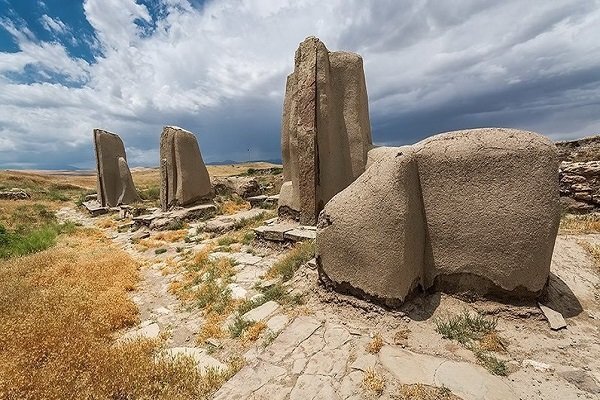Iron Age Tepe Hasanlu undergoes restoration

TEHRAN – Tepe Hasanlu, a significant Iron Age site in northwest Iran, has undergone some rehabilitation work, the director of the historical site has announced.
A budget of one billion rials (about $24,000 at the official exchange rate of 42,000 rials per dollar) has been allocated to the project, Hassan Shiri said on Saturday.
The project involves strengthening the architectural remains using cob material, removing disturbing vegetation, arranging the sand path, and repairing and painting office buildings, the official added.
The historical site, which was inscribed on the National Heritage list in 1965, has become a national site for research and scientific activities, he explained.
Situated a short distance south of Lake Urmia, Tepe Hasanlu consists of a 25m high central mound with massive fortifications. The site is thought to be once a citadel surrounded by paved streets and an outer town with houses, stables, and temples.
The magnificent ‘Gold Bowl of Hasanlu’
Tepe Hasanlu is mostly known for a millennia-old gold bowl discovered in 1958 by an Iranian man, named Emamqoli Mohammadi Hasanluei in the debris of a burned building, part of the major architectural complex in the site.
Engraved with images of gods and rituals, a stone cylinder with gold caps, a figurine of laminated ivory, and a sword-hilt with a bronze guard, the Gold Bowl of Hasanlu is named after the man who discovered it almost 3000 years later not far from a skeletal hand of an individual who had been fleeing with the piece at the end of the 9th century BC.
Some evidence suggests when the citadel of Hasanlu was under violent siege some soldiers could penetrate the citadel grabbing a handful of valuable treasures, including the treasured gold bowl. The hypothesis suggests that the whole building was collapsed due to fire, crushing the warriors and their prized possessions under layers of debris. And here they remained for around 3,000 years until the ground-breaking discovery in 1958.
However, due to the lack of written records, very little is known about the inhabitants of Hasanlu and their invaders.
Among the most important objects uncovered at Hasanlu were an unusually decorated silver bowl, several iron garment pins headed by bronze lions, a solid gold bowl, a knife handle with gold cloisonné, and two hollow bronze horse heads that served to hold liquids.
According to the Britannica Encyclopedia, Hasanlu was inhabited from about 2100 to about 825 BC, but the richest period yet excavated dates to the 10th and 9th centuries BC. The period, often called “Mannaean” after the name of the people who lived in the area, is characterized by gray pottery accompanied by black and red varieties, the black ware being of a much finer quality and probably made in imitation of metal vessels.
Experts say parallels to the motifs on the Hasanlu objects have been found in Elam, Assyria, north Syria, and Urartu, indicating that Iran not only received considerable cultural and artistic stimuli from other areas but also, in turn, exerted influence on them.
The Gold Bowl of Hasanlu is being kept at the National Museum of Iran in downtown Tehran.
ABU/AFM
